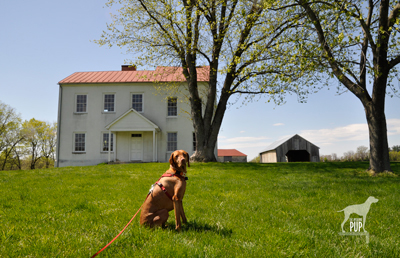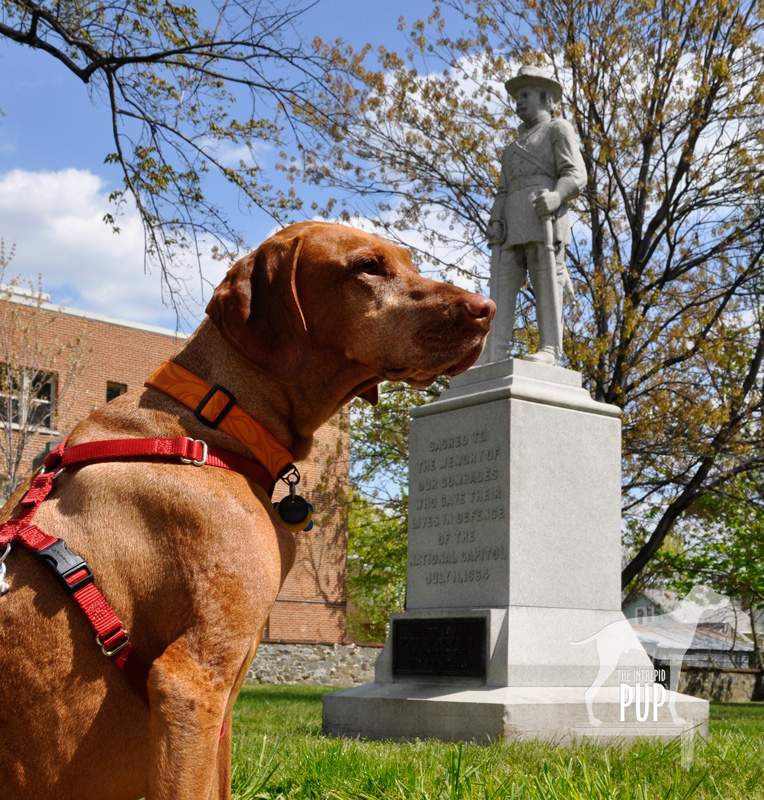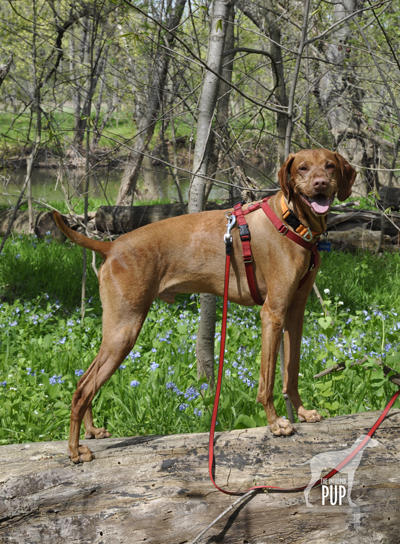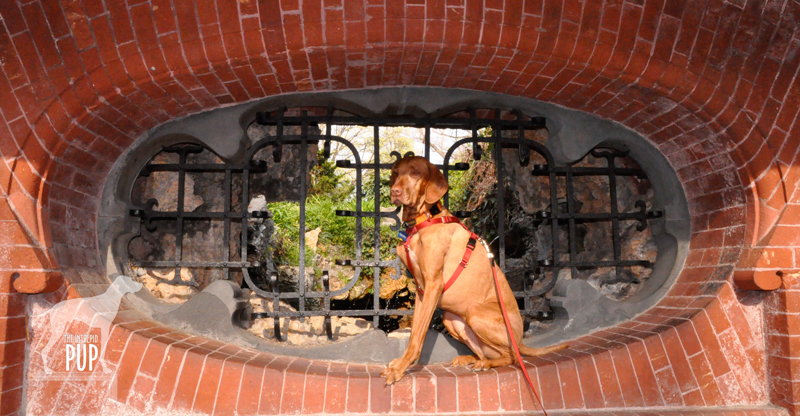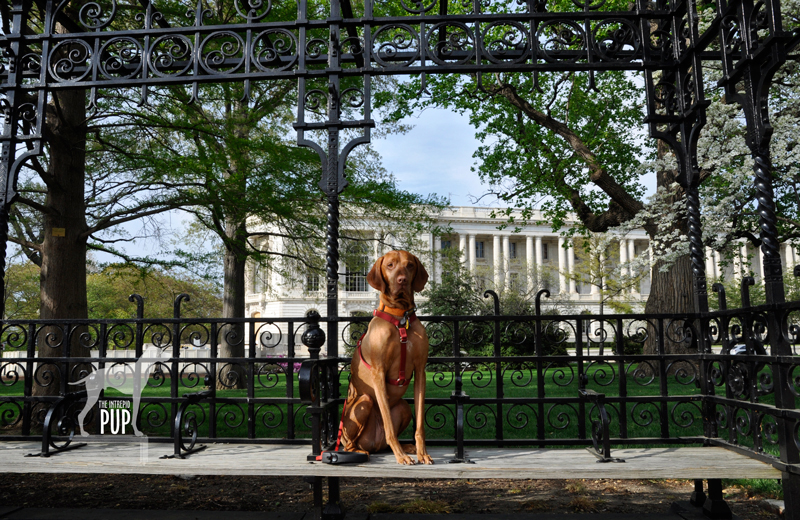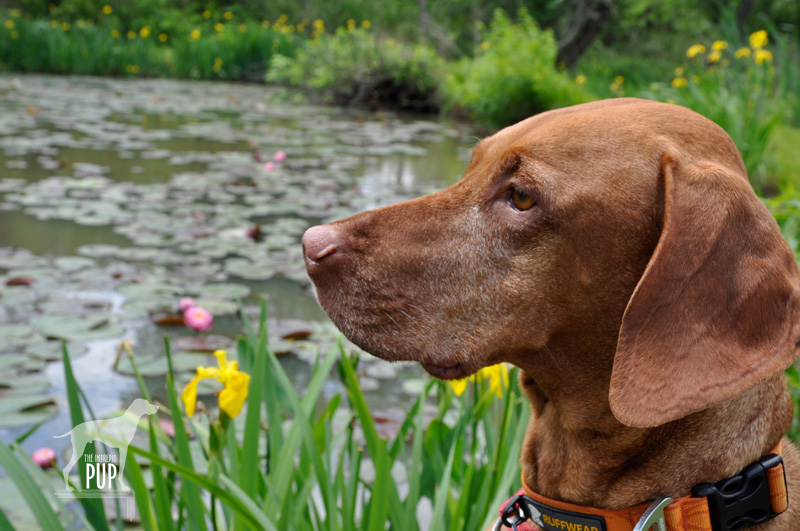
Tavish at the lily ponds. The hardy and tropical water lilies were blooming, little jewels of color amid the emerald green pads. Surrounding many of the ponds are irises, but the yellow variety is invasive. It is still too early for the lotus blossoms that are hallmarks of the summer months.
Even if today wasn’t National Public Gardens Day, we’d be touting Kenilworth Park & Aquatic Gardens. Did you know that it’s the only National Park Service site devoted to the cultivation and care of aquatic plants?
The precise story behind Kenilworth is one you couldn’t make up if you tried. Walter B. Shaw was a Civil War veteran who had lost his right arm in the fighting. He settled in Washington, D.C., securing a job as a Treasury Department clerk after teaching himself to write left-handed. Outside of government work, however, Shaw’s true love was water lilies. Eager to propagate them, he secured a dozen specimens from his home state of Maine and placed them in an unused ice pond on his 30 acres. When his hobby outgrew the one pond, he simply built more ponds until—under the auspices of the newly established W. B. Shaw Lily Ponds—he was successfully collecting exotic varieties, experimenting with hybrids, and commercially shipping plants nationwide. His daughter Helen Shaw Fowler joined him in his business ventures, and together they opened the gardens for the public’s enjoyment. Under Helen’s careful stewardship, the gardens expanded even further after Shaw’s death in 1921, and literally thousands of visitors a day (including President and Mrs. Coolidge!) flocked to marvel at the aquatic blooms during the summer months.
Fast forward to the 1930s and the U.S. Army Corps of Engineers was faced with dredging the silt-choked Anacostia River, an act that would have signaled the demise of the gardens. Helen fought the plans and an accord was reached in 1938 when Congress allocated $15,000 to purchase eight acres of the gardens for public preservation. Helen continued to live on the property until her death in 1953 but taught Fred Lundy, a gardener with the National Park Service, how to care for the water lilies. The Park Service eventually took over management of the garden and renamed it Kenilworth to reflect the name of the broader community. Today the park consists of 45 ponds of water lilies across 12 acres, enveloped by another 70 acres of freshwater tidal marshlands.
Midday yesterday Tavish the Intrepid Pup was eager to start exploring, and everything about his body language screamed, “What magical place is this, anyway?” Talk about sensory overload! At the lily ponds there were Canada geese (and therefore also a lot of goose droppings). We’d been advised by the park ranger when we arrived that there were several fledglings about, so we kept our distance. Tavish was actually pretty unphased by these tawny goslings paddling by…because there were BUTTERFLIES! And FROGS! Ok, so technically we never saw a frog, but from the blurs of color and the loud splooshing sounds, we could tell they were big. It was great fun watching Tavish try to anticipate where the next blur and sploosh would come from. Oh, and the TURTLES! There were a few small painted turtles perched on logs, but they had nothing on the dinner platter-sized snapping turtles hanging out sunbathing at the ponds’ edges. These guys were perceptive and before we could come within ten paces it was like those targets in a county fair shooting gallery where each toppled in succession with an unceremonious plunk. Invariably we were rewarded with a closer look when a few poked their heads back up out of the muddy water.
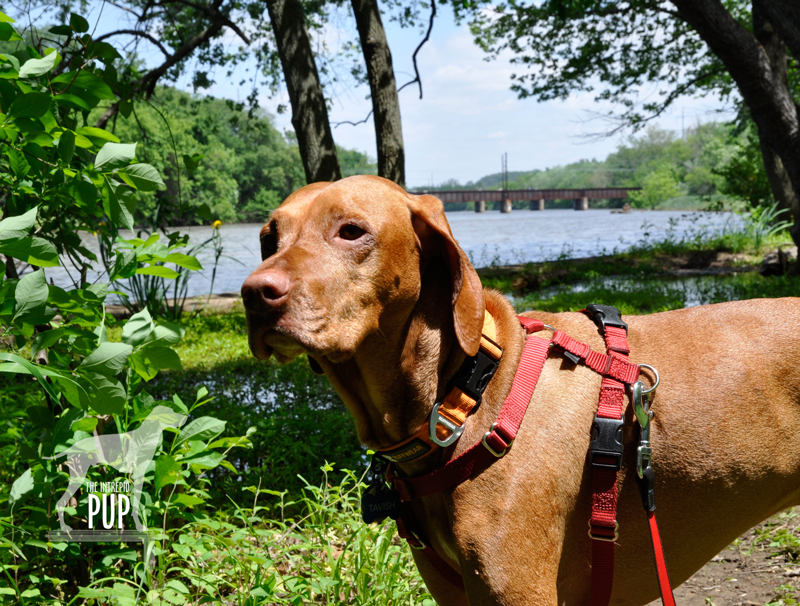
Though hard to disengage Tavish from the endless fascinations of the lily ponds, we did finally make it onto the River Trail (note: NOT a loop; it’s 0.7 miles each way). It meanders in a northwesterly direction among the thick scent of honeysuckle and then follows the bend of the Anacostia River for a stretch. It ends at the inlet into the marsh itself, which is where you’d enter Kenilworth if coming by kayak or canoe. You never fully escape the incessant thrum of car traffic careening by on Route 50, punctuated by the occasional clatter of an Amtrak train crossing the railroad bridge. Where this might be overtly annoying in another setting, in a strange way, the noise serves notice that this fragile environment struggles to exist in spite of urban encroachment.
Returning to the lily ponds, we set out in the opposite direction onto the extensive boardwalk. Signs along the trail have faded considerably, but on this sunny, breezy afternoon we didn’t exactly need a plaque to tell us that the fish and tadpoles were plentiful. Tavish kept poking his head through the railing to watch them. Red-winged blackbirds darted among the tall grasses, and a great blue heron soared above. Just another spectacular day in the marsh.
Dogging the Details
38°54′45.50″N, 76°56′31.24″W
Kenilworth Park & Aquatic Gardens, Washington, DC
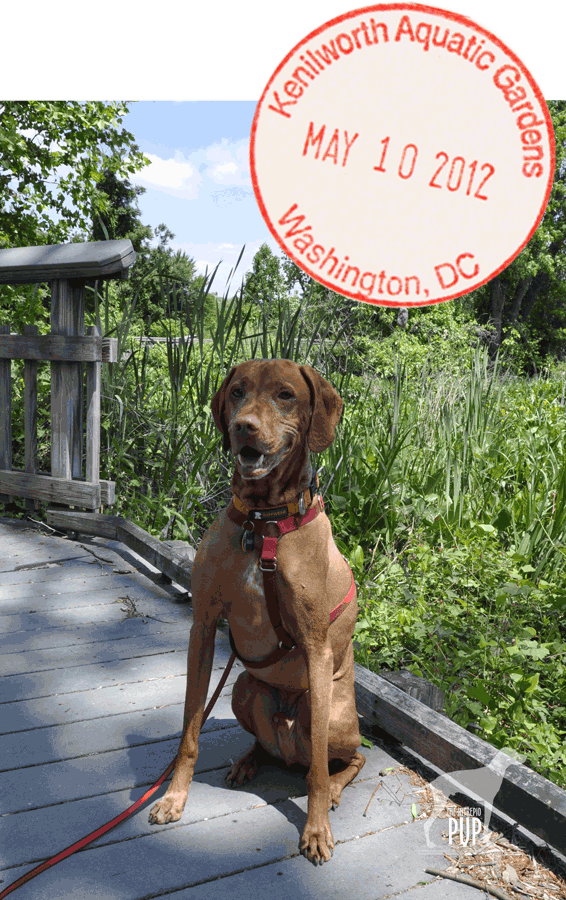

It can be a little tricky navigating this residential area in northeast Washington to find the proper entrance to the aquatic gardens, so if you have GPS, use it!
Intrepid Pup has been to Kenilworth before, but it really pays to be a repeat visitor. While the walking trails are always nice, the visual appeal of the ponds changes dramatically throughout the seasons.
When we stopped in at the visitor center to snag a map, the Park Service ranger—a helpful young woman who, come to find out, was getting married this weekend at another National Park—was genuinely pleased to see us and remarked, “Kenilworth definitely welcomes leashed dogs!” The dog-friendly trails and scenery earn Kenilworth a “2” on the Intrepid Pup wag-a-meter. Of course, the general courtesy about cleaning up after your dog still very much applies, and there are waste receptacles conveniently located throughout the front section of the gardens (though not so much on the River Trail or boardwalk sections). Tavish stayed in the vestibule of the Visitor Center as dogs aren’t permitted inside, but there is a small bookshop and a series of compact displays about the importance of the wetlands and the history of Kenilworth—from use as the fishing grounds of the Nacotchtank peoples through to the present day.
Walk every step of the grounds around the various ponds, out-and-back on the River Trail, and along the boardwalk, and you’ll be lucky to have eked out 2 miles. But you’ll easily have whiled away an hour or two, especially if you have a curious pup intently stalking every lily pad fluttering in the breeze!


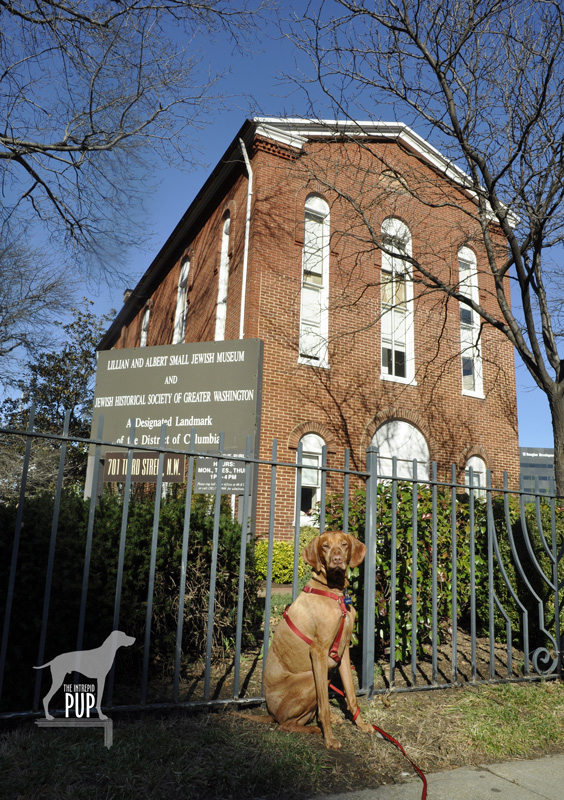 Now that the calendar has flipped to May, the national observance of
Now that the calendar has flipped to May, the national observance of 
